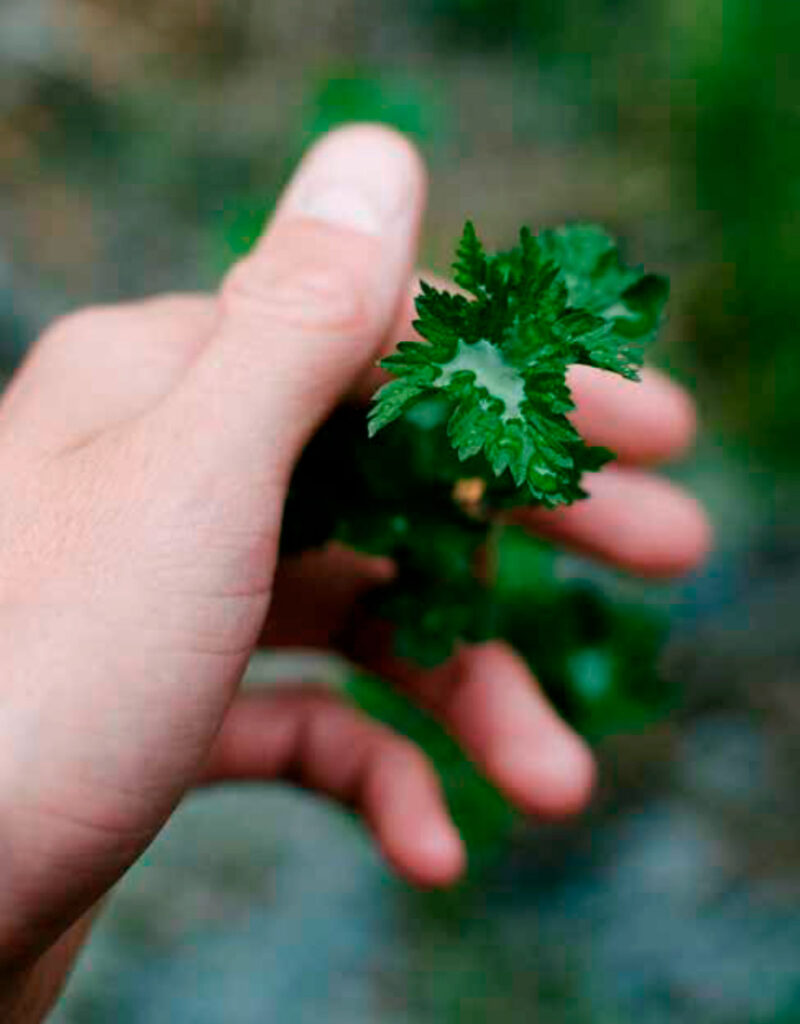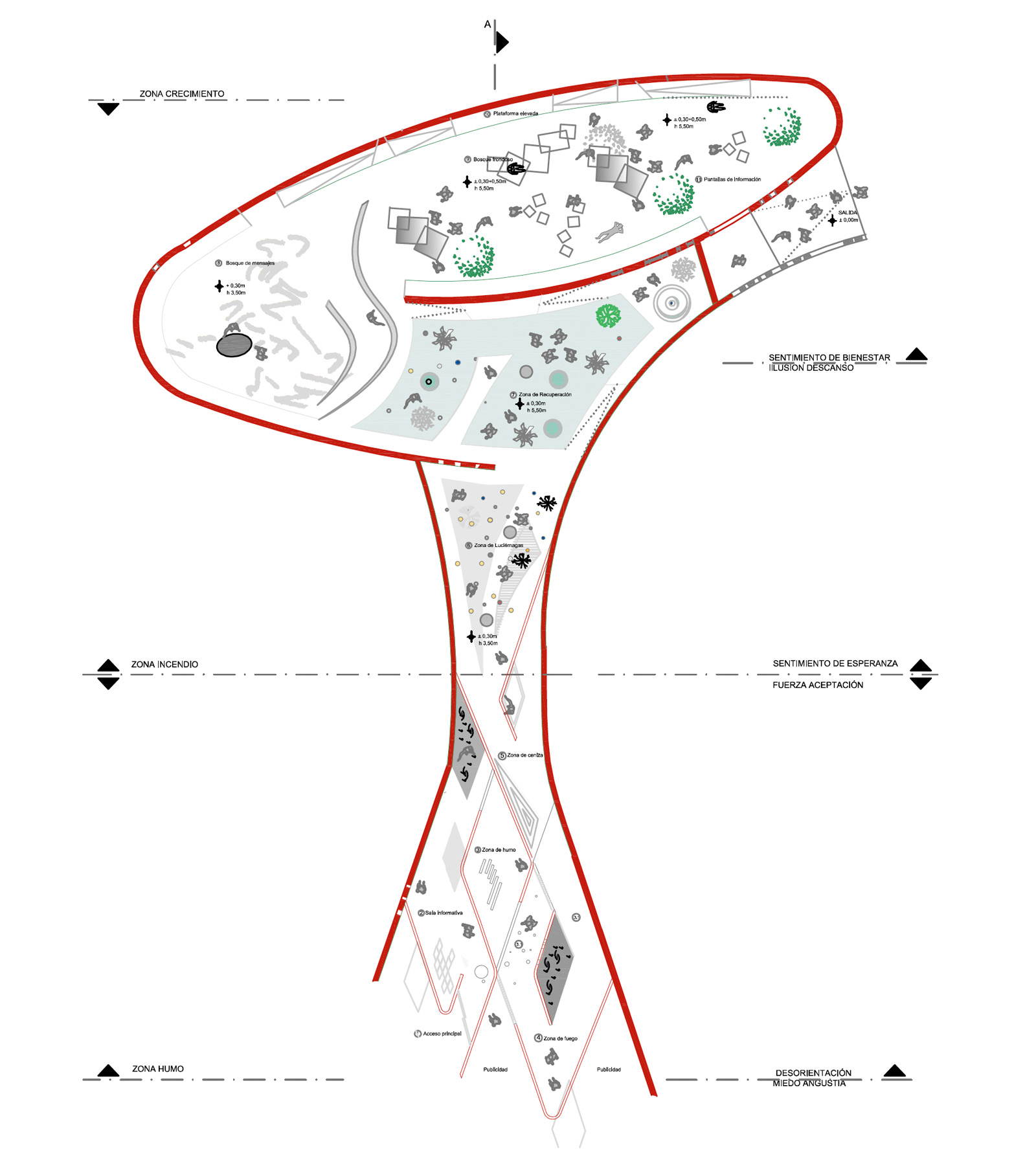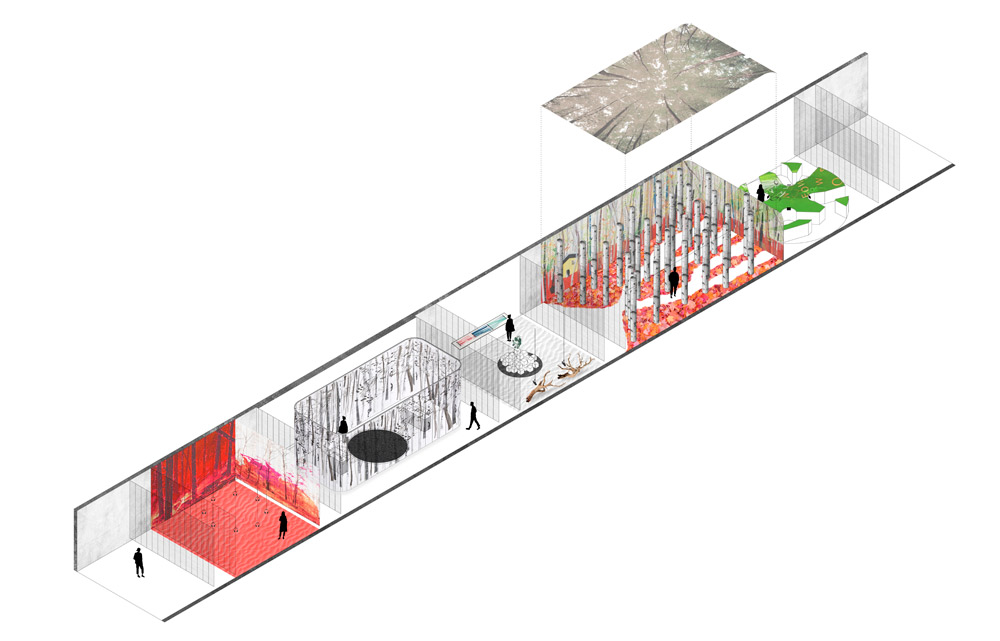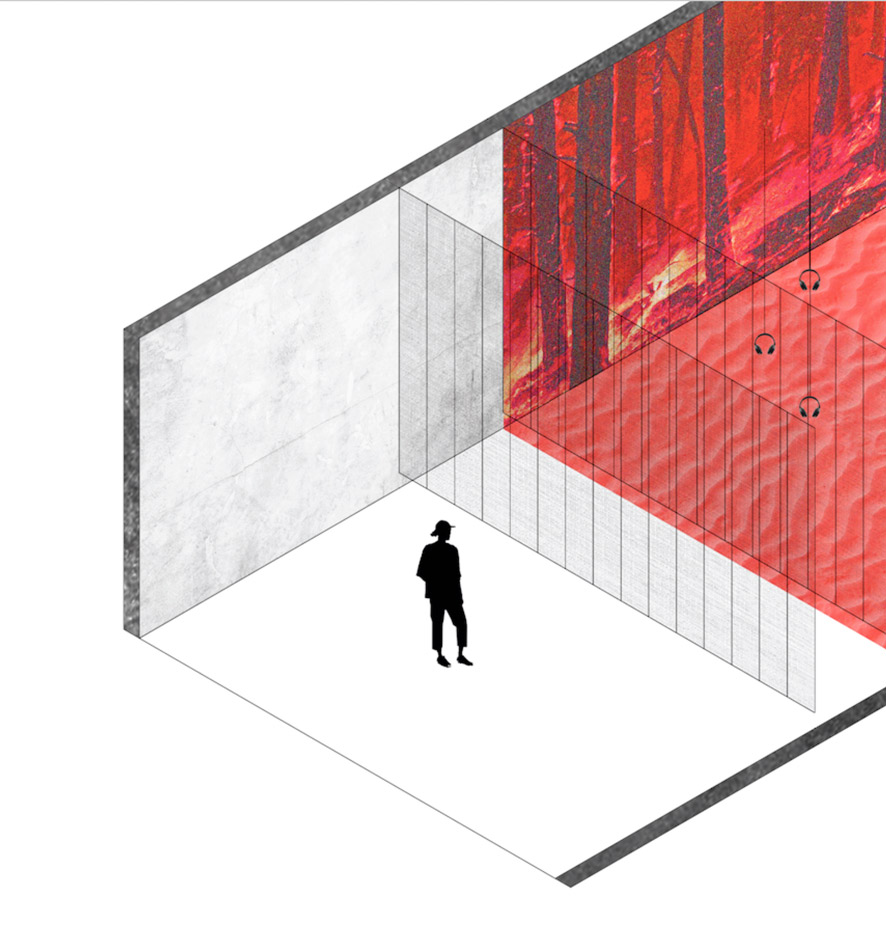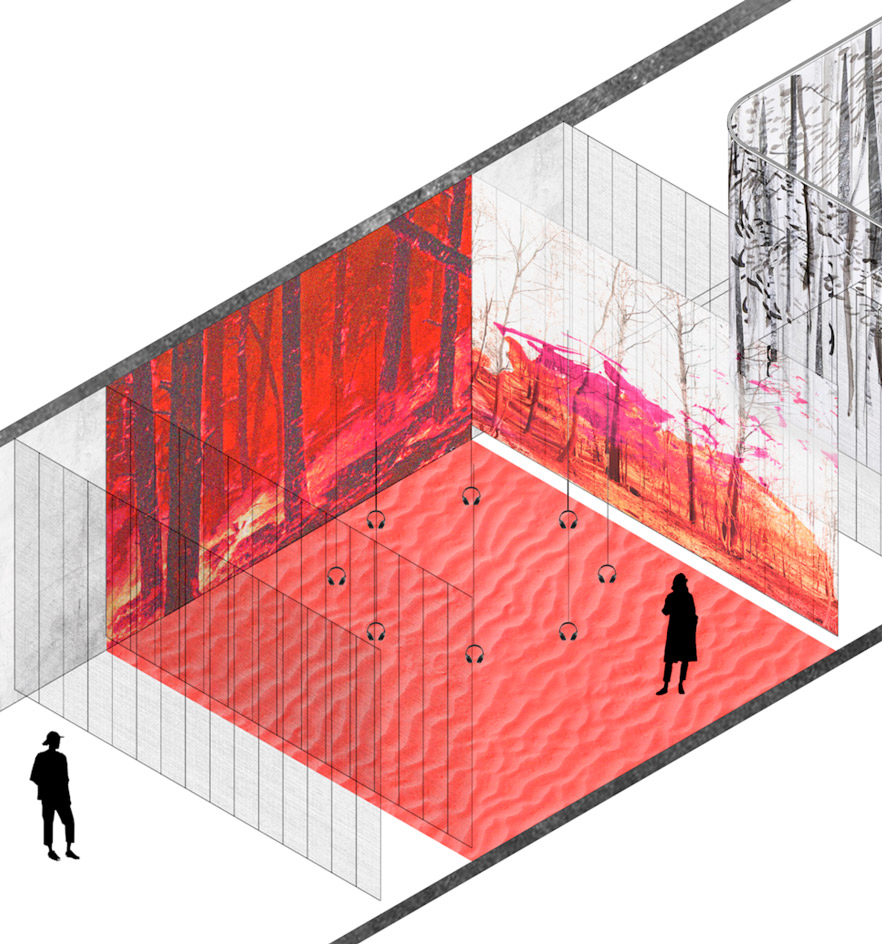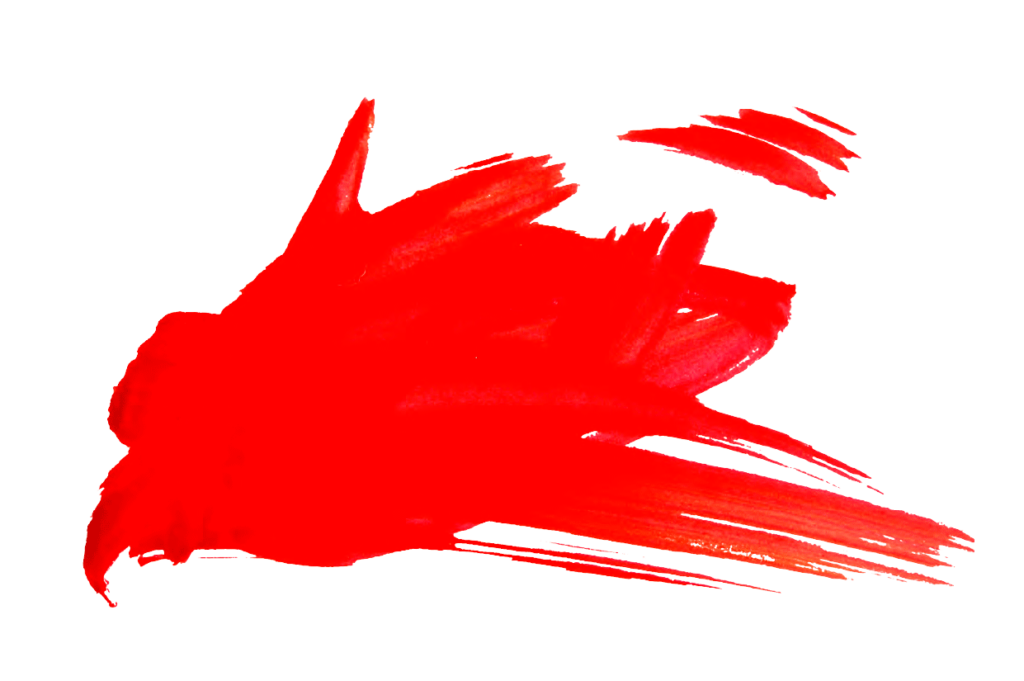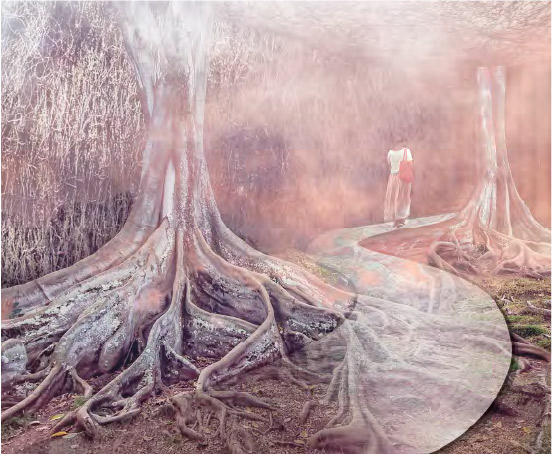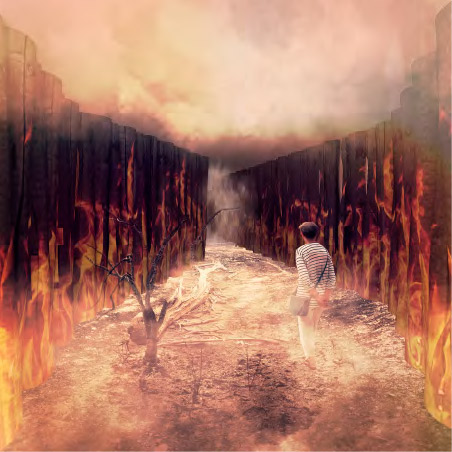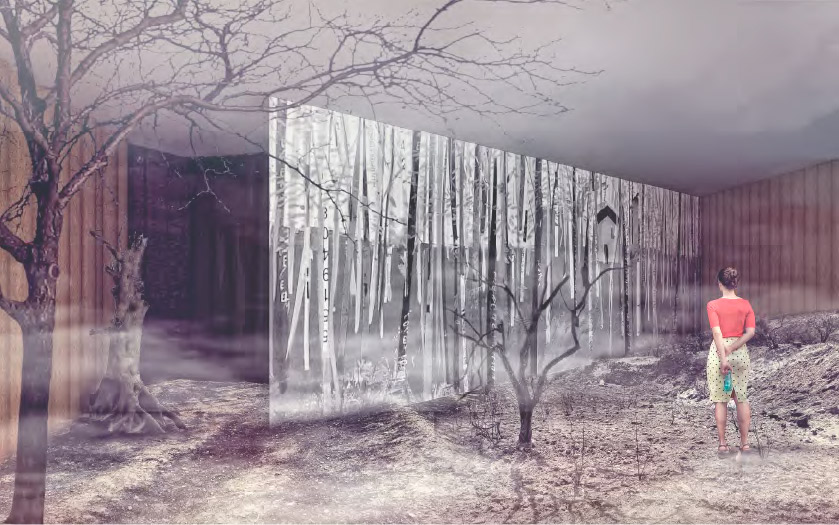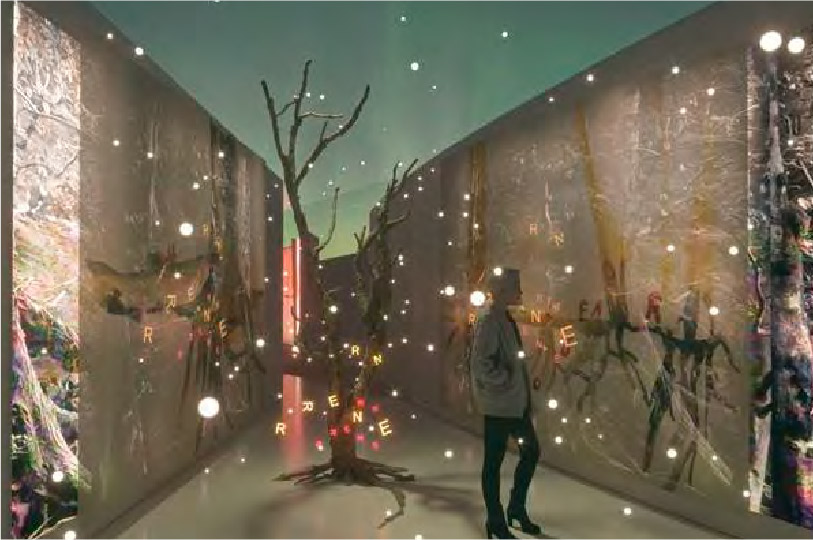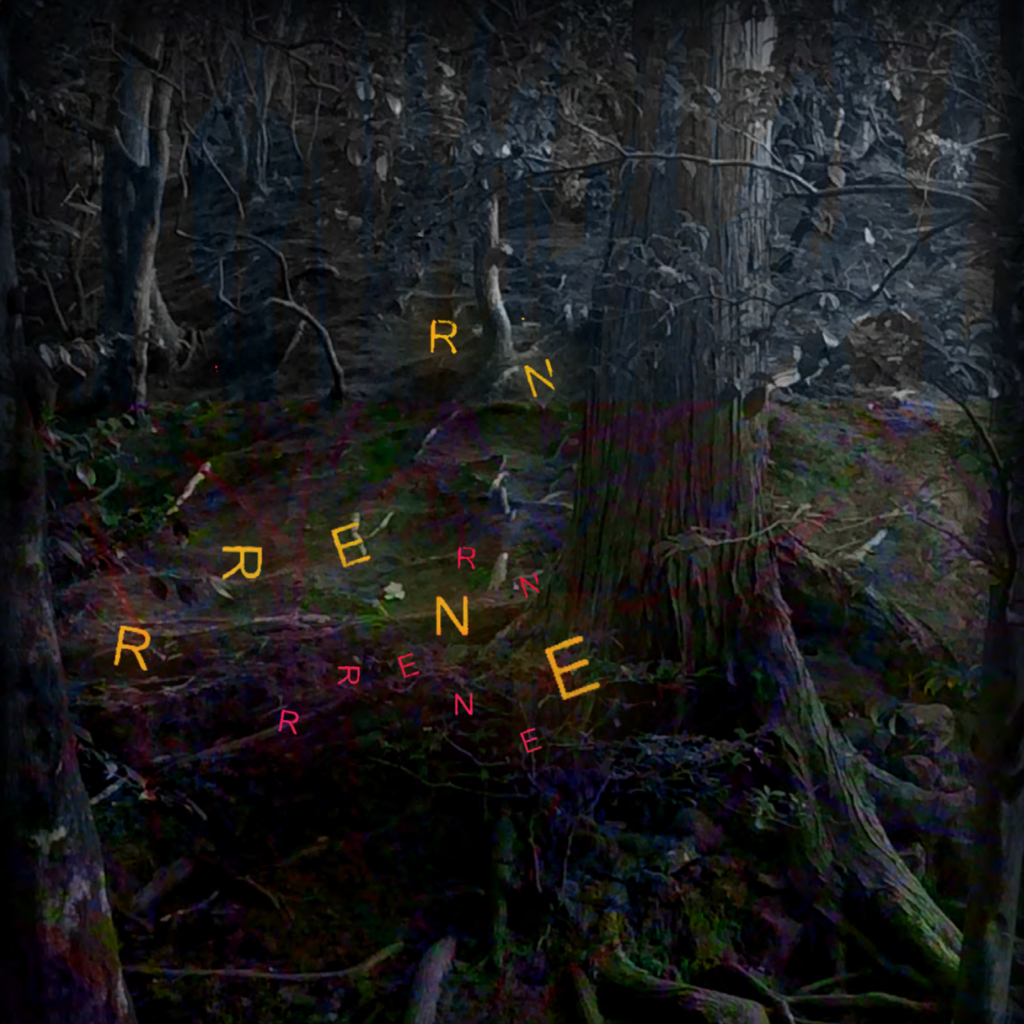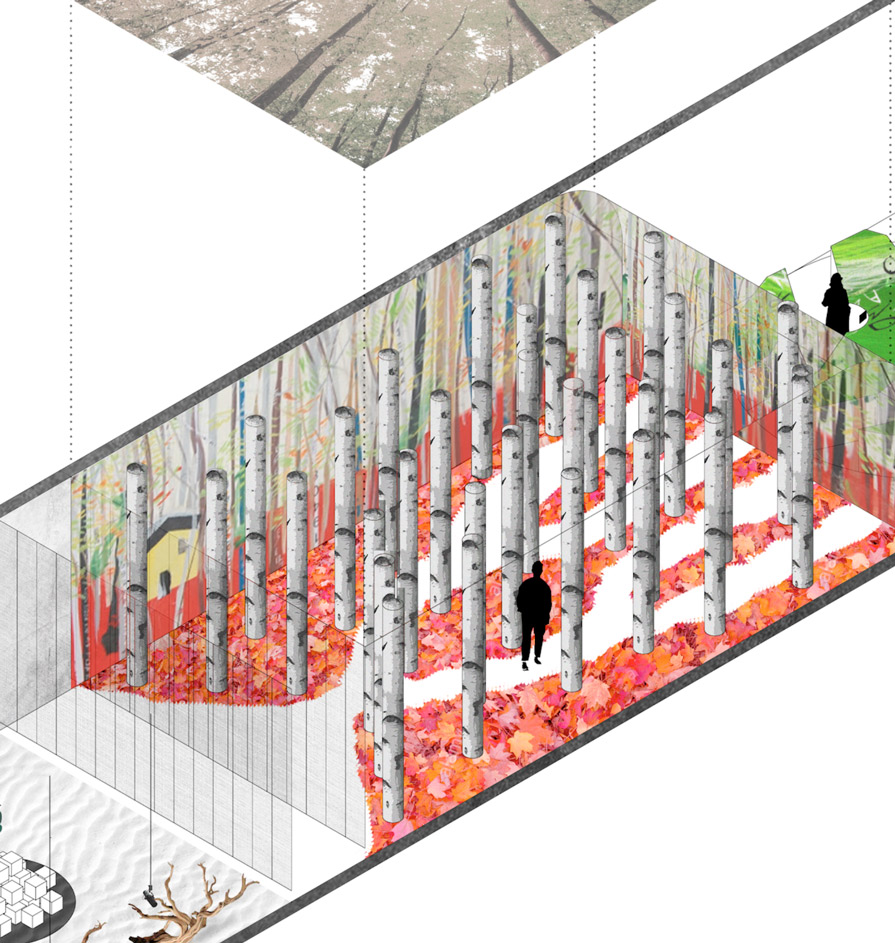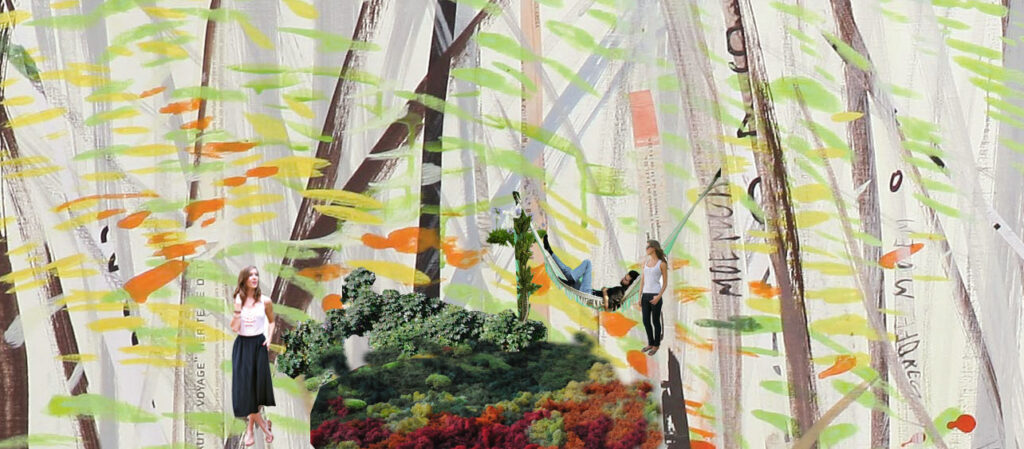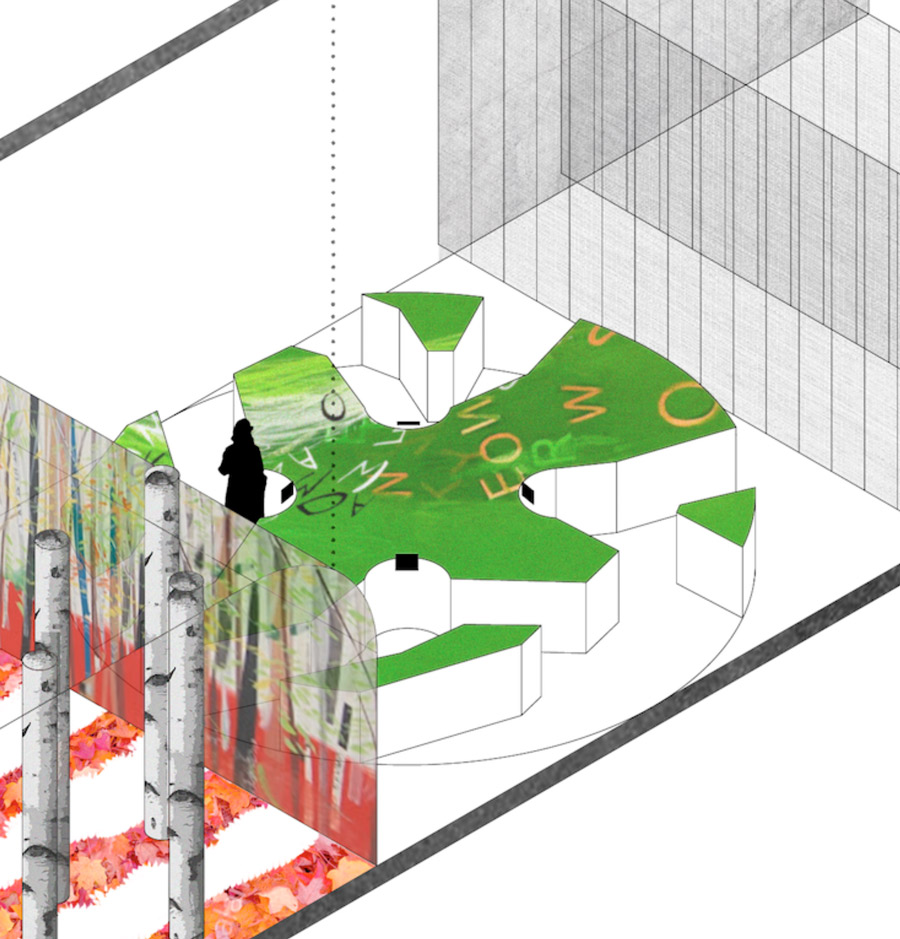Out of fire you’ll be reborn
“The ability of the burnt forest to be reborn from its ashes spoke to me of hope and of the unfailing power of life,”
says Regina
Living and experiencing the rebirth of a forest
A path in the shape of a tree through a changing forest. A story that begins at the roots and ends in the treetops.
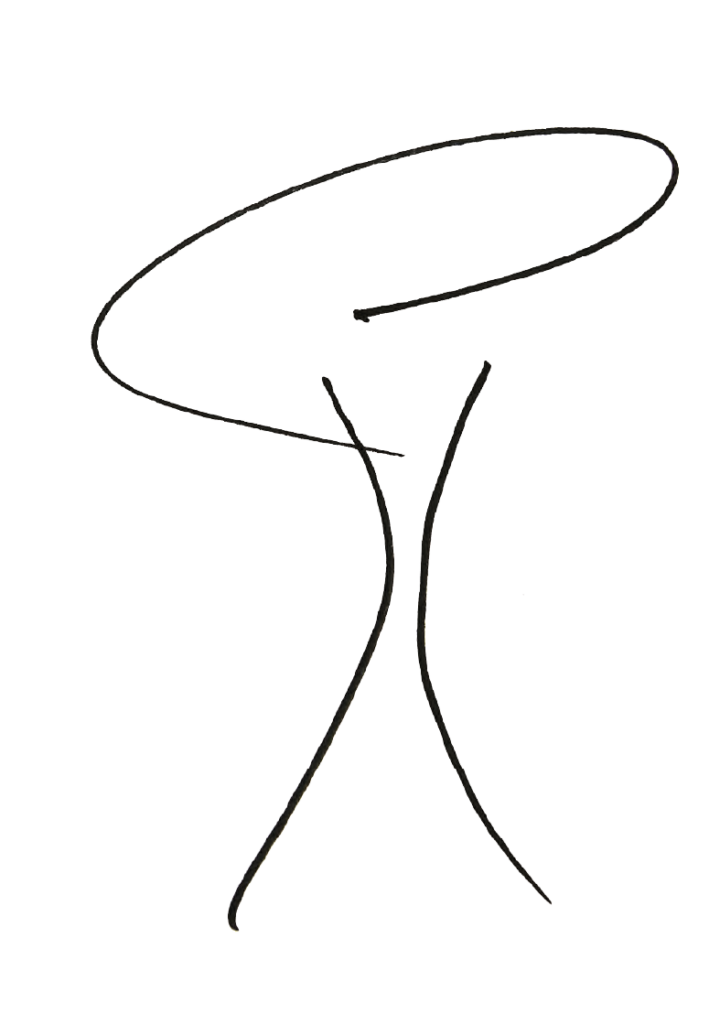
From a bird´s eye view, this exhibition space represents the structure of a tree with its roots, trunk and crown.
The tree is the symbolic figure of the forest, representing regeneration, fertility, continuity, and life.
The layout seeks permeability and adaptability. It advocates an architecture based on natural and ecological elements. The structure can be adapted to macro spaces as well as smaller rooms.
 Putting the spectator on stage through the smoke to feel lost and disoriented. Change of temperature, pressure and sounds.
Putting the spectator on stage through the smoke to feel lost and disoriented. Change of temperature, pressure and sounds.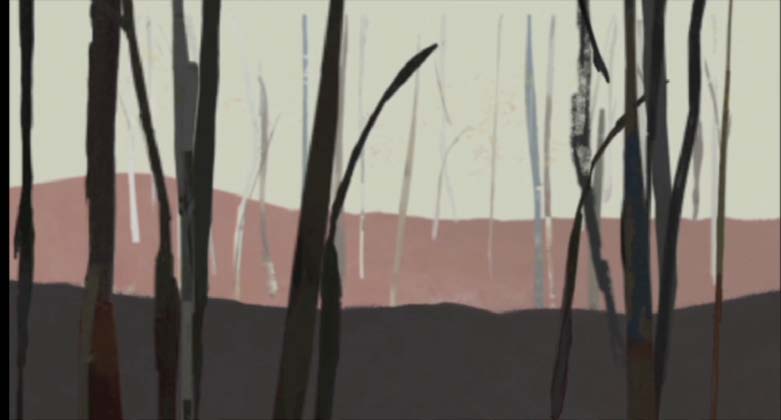 Interactive area with fire. Water vapor simulating fire. Sense of desolation, sadness, rage. Walking among the flames. Smell of burning wood. High temperature.
Interactive area with fire. Water vapor simulating fire. Sense of desolation, sadness, rage. Walking among the flames. Smell of burning wood. High temperature.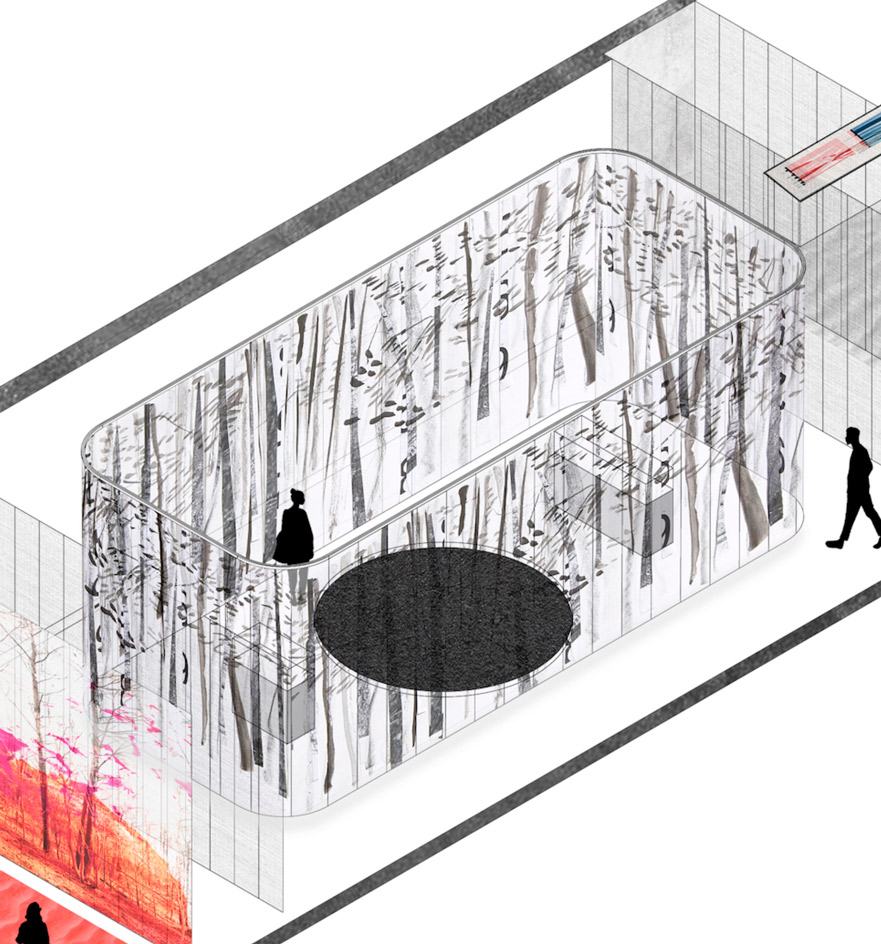
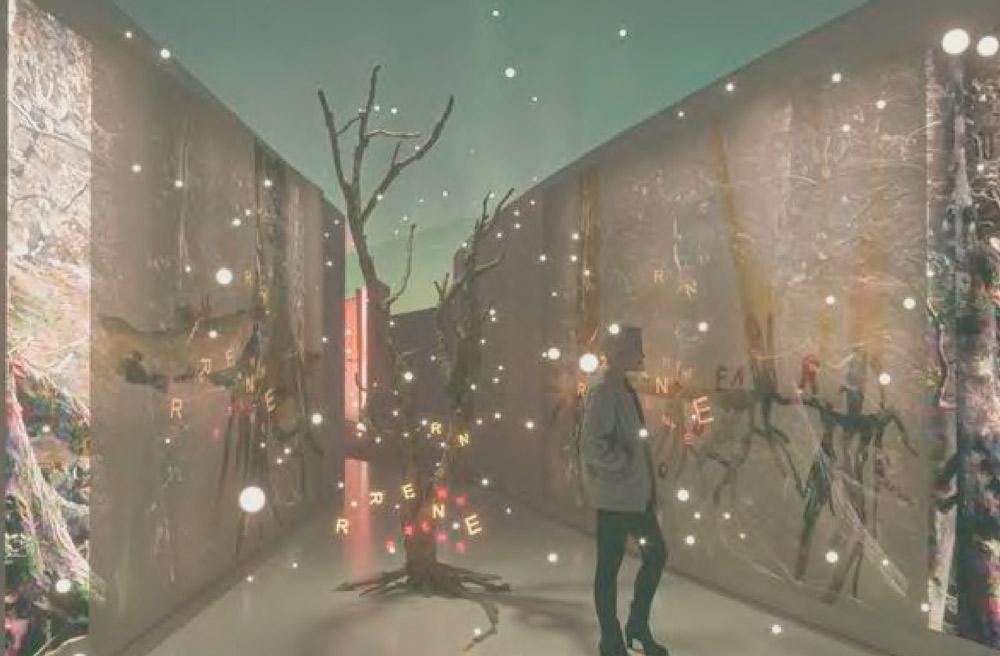 Amidst the darkness we begin to see the light See proposal Firefly Room
Amidst the darkness we begin to see the light See proposal Firefly Room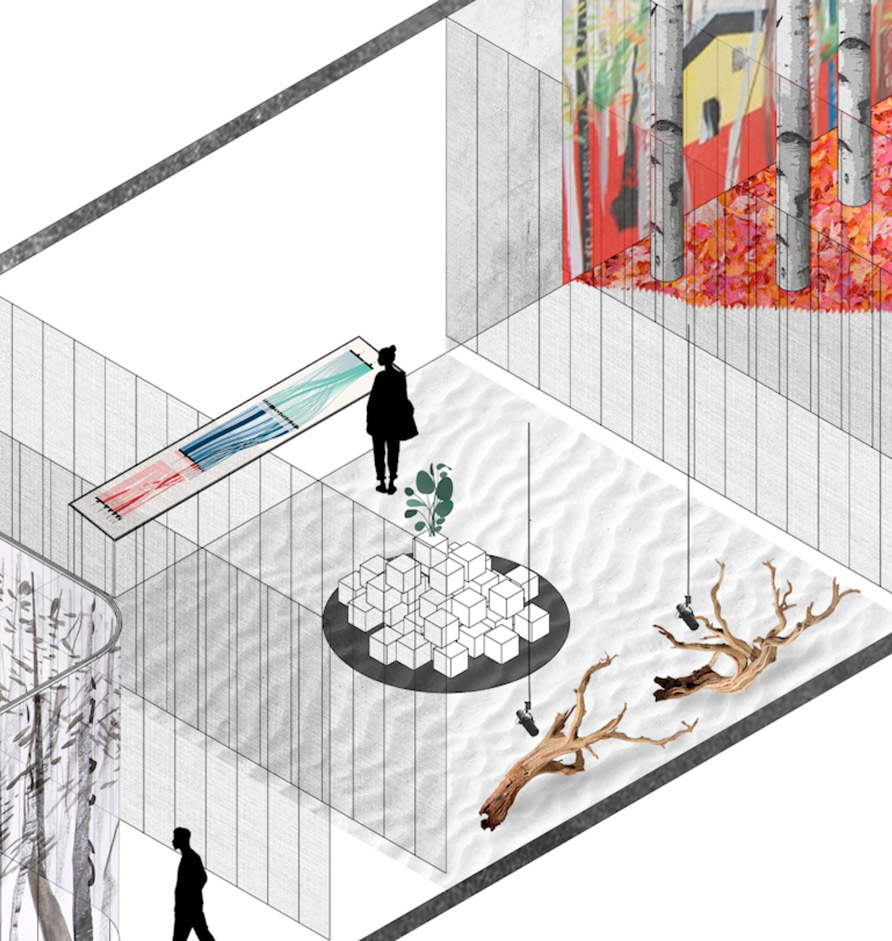
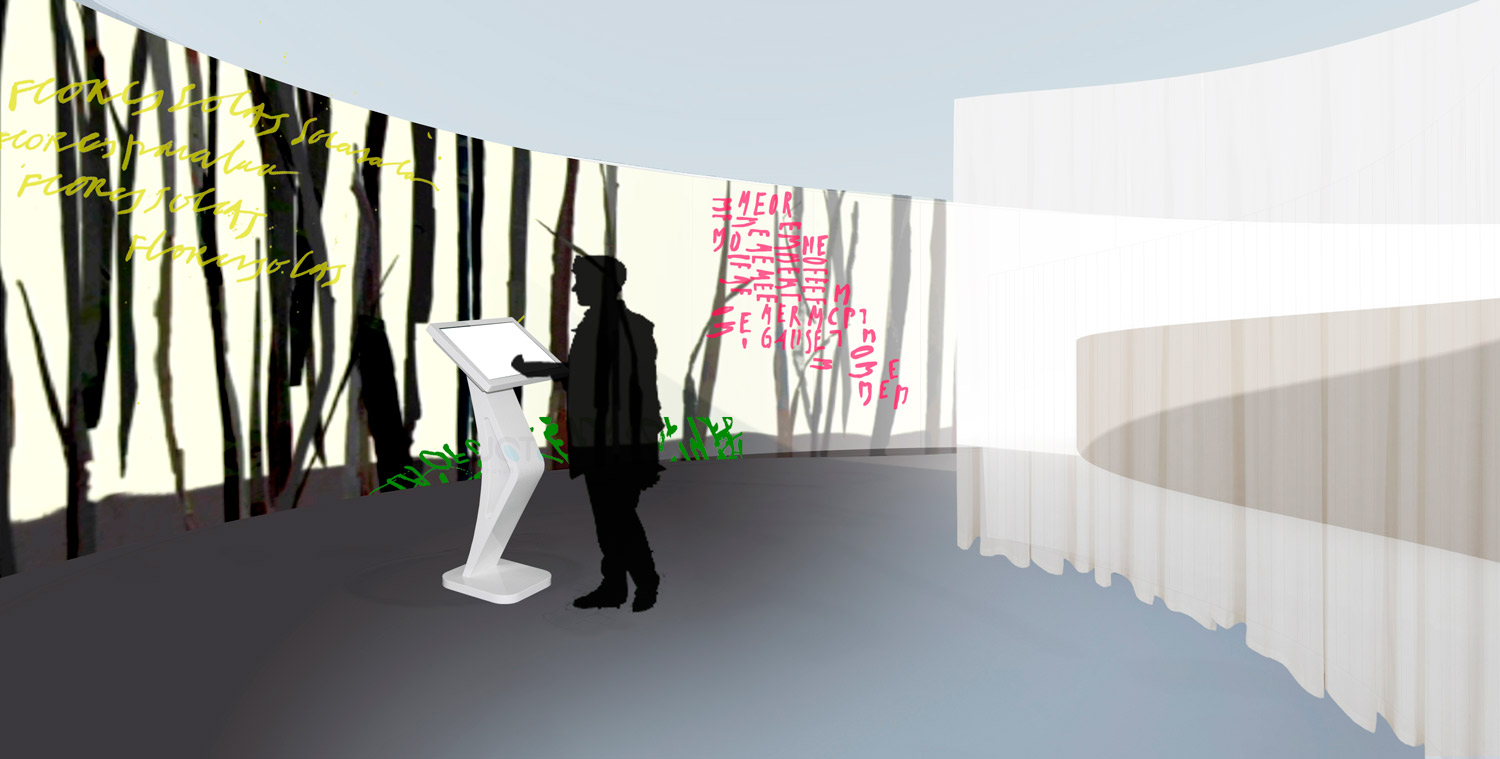 Great pure, clean and virgin space. As if it were a blank piece of paper, it is the moment to write and transmit our message of hope to create a new life and continue with the natural cycle. View proposed Message Room
Great pure, clean and virgin space. As if it were a blank piece of paper, it is the moment to write and transmit our message of hope to create a new life and continue with the natural cycle. View proposed Message Room Space of the Royal Forest created thanks to the help, effort and hope. Change of olfactory senses such as the smell of grass, pine or plants in these phases of flowering. The subtlety allows the viewer to use his imagination and deduction to understand the message. By making it his own, he feels more involved, gives rise to dialogue and thus to its dissemination.
Space of the Royal Forest created thanks to the help, effort and hope. Change of olfactory senses such as the smell of grass, pine or plants in these phases of flowering. The subtlety allows the viewer to use his imagination and deduction to understand the message. By making it his own, he feels more involved, gives rise to dialogue and thus to its dissemination.

The pathway starts at the root, continues along the trunk and ends up at the top.
In each of these areas, the visitor will experience through the senses the beginning of the fire, the devastated landscape, the rebirth, and the new forest.
To live and to experience the rebirth of a forest.
The devastation
2. A vertical walk through a forest that constantly changes.
Exhibition objective
To create an experience to reflect on the natural environment from an artistic, emotional and multisensorial approach.
The exhibition aims to offer a look at the problem of forest fires that is of interest to both the specialized and general public.
We will talk about the need for change and action based on the idea of a resilient forest recovering from fire.
We are relying on a narrative that combines art, data and stories that are of general interest, making the messages as powerful and accessible as possible to all audiences. Even those who do not have personal experience of fire can get an insight into this relevant topic.
On Earth, there is always something burning. Forest fires can be started by lightning or accidentally by people.
We also use controlled fires to manage croplands and pastures and to clear natural vegetation for agricultural production. Fire is part of the history of the planet and our history as a species.
At the same time, fire can generate large amounts of smoke pollution, release greenhouse gases and degrade ecosystems.
We live the fire.
The scientific definition of fire states that it is not a substance, but a reaction that synthesizes its surroundings.
We start from this definition to characterize fire as a lively, powerful and often violent reaction of nature.
In this first room we will explain what a fire is, what types of fire exist and the threats they pose.
This content will be accompanied by a parallel plot, human and close to the public; witnesses will talk about their personal experiences of fire and forest fires.
We enter the burnt forest.
Fires modify ecosystems drastically on a local and global level. This room invites the visitors to take part in a journey where experience and data are combined to understand fire’s devastating consequences.
The first level (outside) consists of Regina Saura’s large-format paintings of burnt tree roots in an atmosphere of total silence. This allows the public to experience the devastation sensorially.
On a second level (inside), the public is invited to acquire information and to reflect on the devastation, based on static and interactive data visualizations, in both cases using materials that speak to us of destruction such as ashes or burnt wood.
The static visualizations reinforce the global nature of the problem of forest fires and their consequences: the loss of hectares of forest, the loss of biodiversity, climate change, and the generation of greenhouse gases, among others.
For its part, the interaction seeks to connect the visitor with the issue in a more intimate way, using questions such as what do you want to know about fires? Or what would you take away from your house if a fire threatened to burn it down?
We see the first shoots among the ashes.
A few days after a fire, we begin to see the reappearance of a diversity of living beings. In this room, the spectator witnesses the awakening of the forest through different elements to witness the resilience of nature.
The focus will be on the survival mechanisms of nature. We will talk about the different living organisms (insects, animals, the first shoots) that return to the forest after a fire. This shows the regenerating forest as an ecosystem in which hundreds and thousands of living organisms, even microscopic ones, coexist.
On the other hand, we will generate a narrative that compares our human life with the life of forests, to raise awareness of the difference of speeds between the life cycle of nature and that of human beings.
We see for the first time a forest with trees.
The last two rooms immerse the spectator in a lush, restored forest and propose a journey to reflect on what has to happen for a forest to recover and how our decisions directly affect the forest ecosystem in which we all have a part to play. The aim is to understand the impact and consequences of actions that are in our hands.
Some of the topics to be addressed in this room:
– The importance of forest health
– The repercussions
– Information on best practices to take after a forest fire to help nature, in keeping with the authorities’ regulations.
A space for reflection
We will finish the exhibition immersed in the treetops, made up of leaves painted by Regina Saura, proposing an experience of reflection and community.
The public sees the final form of the recovered forest from a bird’s eye view, with a sense of fullness, calm and abundance. Here, they are invited to contribute their own message on a leaf while being able to read other visitors’ messages.
This generates a forest of leaves that collects all the messages from the public.
